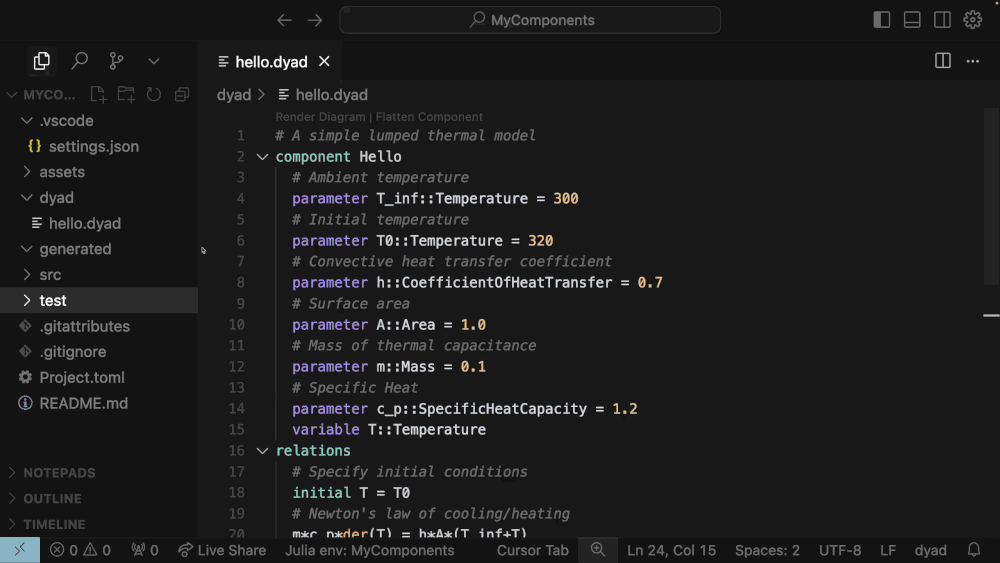Dyad Studio (November, 2025)Dyad Studio is a VSCode extension for the Dyad language. Dyad is our next-generation platform for model-based design. Using modern scientific machine learning (SciML) techniques and equation-based digital twin modeling and simulation, Dyad encompasses block diagrams, acausal modeling, and a differentiable programming language all within a single environment. Dyad also gives you access to the Julia language and its large scientific and numerical ecosystem while leveraging the power of our native Julia linear, non-linear and differential equation solvers as well as symbolic manipulation capabilities all optimized and compiled for the users target hardware. The Dyad Studio extension allows users to create and develop Dyad libraries and then compile them to Julia code. To run the Julia code, you will need the Julia programming language installed on your computer, and you will need to authenticate with a JuliaHub account to download the proprietary Dyad software. RequirementsYou will need to perform some setup before you can use Dyad Studio locally:
Quick startSee the Dyad Getting Started guide for an introduction to Dyad Studio. FeaturesDyad Studio is a development environment for the Dyad modeling platform. With this extension you can:


|

